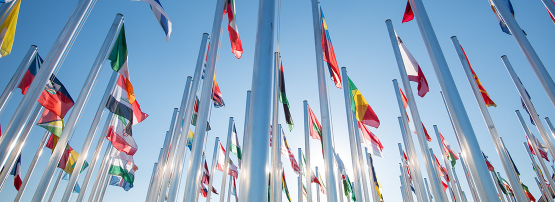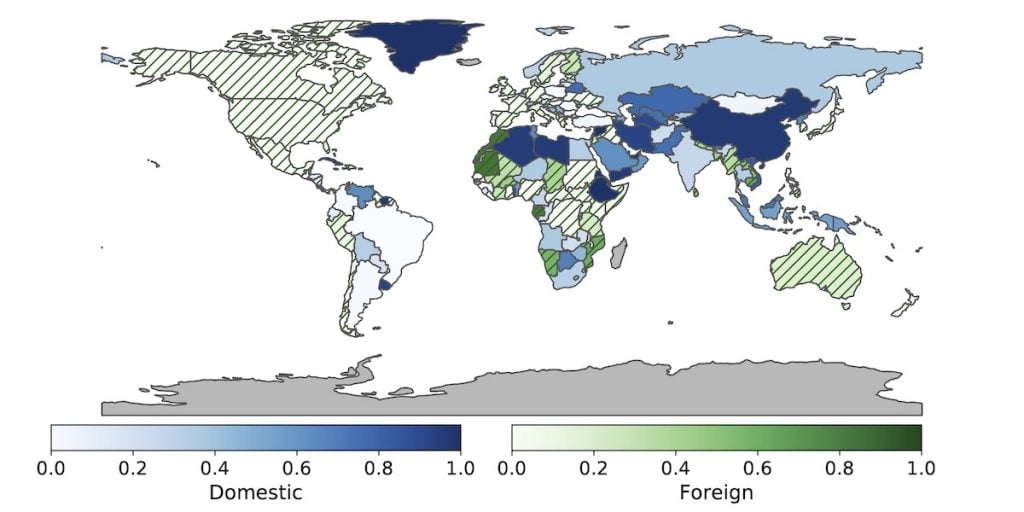
How many major telecommunication companies are state-owned, and in which economies do they operate?
Knowing the answer to such questions can be critical for network operators to make informed decisions on routing, interconnection and general network operations, particularly when they are operating in another economy or when a peer company is owned by a foreign government. Such information can also help operators understand telecom business dynamics in foreign economies they are not familiar with.
In a recent study to shed light on different state-owned Internet providers around the world, we at Northwestern University, Northeastern University, the University of California, San Diego and Georgia Institute of Technology found that state ownership of Internet providers is a widespread phenomenon. And that governments have different approaches to engage in telecommunications markets, for example, as access providers (ANTEL in Uruguay), or by creating domestic backbones (ARSAT in Argentina), or investing in international connectivity (BSCCL in Bangladesh).
Overall, we identified 989 state-owned Autonomous Systems (ASes) (and 193 foreign subsidiaries), or 302 state-owned companies of 123 economies operating on the Internet (Figure 1).

We found that 17% of the world’s IP addresses are originated by state-owned ASes, a figure that increases to 25% outside the United States.
Further, in almost 50 economies, the majority of IP addresses are in the local economy’s footprint.
The challenge of identifying state-owned networks
Before our study, there was no global database of state-owned telecommunication companies. In our view, there are mainly three reasons for this:
- The Border Gateway Protocol does not reveal anything about the company that is associated with an AS number (ASN).
- Registered names on databases such as whois often do not match commercial names under which the company operates (for example, Colombia’s state-owned subsidiary Internexa Argentina (AS262195) is registered as Transamerican Telecommunication S.A.).
- Conducting this study at a global level is not straightforward, both for technical reasons related to networking data and because it requires understanding different types of corporate ownership structures, as we describe in detail in our paper.
We have made progress towards closing this knowledge gap by creating a methodology that combines technical information with business and encyclopaedic databases to produce a comprehensive (if not complete) mapping of ASNs to company names owned by governments.
How we measured and defined state-owned networks
Our methodology consisted of combining computer network datasets and non-technical (for example, business information databases) data sources to create a candidate list of companies to then manually verify whether a government controls each of those companies. Given the size of the international telecommunications market, it is not possible to examine the ownership structure of all companies, thus we focused on a subset of them that is likely to cover all operators of relevant size.
Our selection of technical data sources aimed to cover the most prominent per-economy access and transit networks across the world using datasets indicating economy-level origin address spaces, estimation of eyeballs (APNIC eyeball report), and a novel metric. To maximize the diversity of our input data source we also include non-technical sources reporting the state ownership of Internet providers, including the commercial (Bureau van Dijk’s) Orbis database, Freedom House’s Freedom of the Net reports and Wikipedia articles.
We further investigated the ownership structure of the companies in the candidate list and kept those companies that satisfy the definition of state-owned enterprise stated by the IMF in its 2020 report. We collected and investigated ownership structures from three main types of data sources:
- Self-reported information (company and government websites and corporate annual reports).
- Authoritative telecommunication sources (ITU and regulators).
- Credit agencies (the World Bank and the IMF).
We also leveraged these sources to expand our dataset and included foreign subsidiaries of state-owned Internet companies providing services abroad.
We hope our findings and our dataset will inspire future research in this area, and help operators in running or expanding their networks. We invite you to read our paper, which we presented at the ACM Internet Measurement Conference 2021, and visit our repository where you can find the full dataset and examples of how to work with this data.
Contributors: Alexander Gamero-Garrido, Alex C. Snoeren and Alberto Dainotti.
Esteban Carisimo is a postdoctoral researcher at Northwestern University.
The views expressed by the authors of this blog are their own and do not necessarily reflect the views of APNIC. Please note a Code of Conduct applies to this blog.
